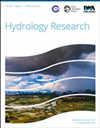Long-term data reflect nitrogen pollution in Estonian rivers
IF 2.4
4区 环境科学与生态学
Q2 Environmental Science
引用次数: 0
Abstract
We analysed long-term (1992–2020) changes in fertiliser use, wastewater treatment, and river water nutrient status in Estonia (N-E Europe) in the context of changing socio-economic situations and legislation. We hypothesised that more precise regulation of fertiliser usage and improved wastewater treatment are reflected as declining riverine nutrient concentrations, and that the largest relative improvements occurred in catchments with initially high proportions of point source loading. We used data on population and livestock densities, fertiliser use, and wastewater treatment from the Statistics Estonia database and riverine nutrient concentrations from the environmental monitoring database. We clustered the rivers by their catchment properties and analysed trends and step changes in their nutrient status. Point source nutrient loading reductions explained most of the observed decline in riverine nitrogen and phosphorus concentrations, whereas the application of mineral fertilisers has increased, hindering efforts to reach water quality and nutrient load targets set by the EU Water Framework Directive and the Baltic Sea Action Plan. Highest nitrogen concentrations and strongest increasing trends were found in rivers within the nitrate vulnerable zone, indicating violation of the EU Nitrates Directive. To comply with these directives, resource managers must address non-point source nutrient loading from river watersheds.长期数据反映了爱沙尼亚河流中的氮污染
我们分析了爱沙尼亚(欧洲北部-东部)在不断变化的社会经济状况和立法背景下化肥使用、废水处理和河水营养状况的长期(1992-2020)变化。我们假设,更精确的肥料使用调节和污水处理的改善反映在河流养分浓度的下降上,并且最大的相对改善发生在最初点源负荷比例较高的集水区。我们使用了爱沙尼亚统计局数据库中的人口和牲畜密度、肥料使用和废水处理数据,以及环境监测数据库中的河流营养物质浓度数据。我们根据河流的集水区特征对这些河流进行了分类,并分析了它们的营养状况的趋势和变化。点源营养物负荷的减少是观察到的河流氮和磷浓度下降的主要原因,而矿物肥料的施用增加了,阻碍了实现《欧盟水框架指令》和《波罗的海行动计划》设定的水质和营养物负荷目标的努力。在硝酸盐脆弱带的河流中,氮浓度最高,增长趋势最强,表明违反了欧盟硝酸盐指令。为了遵守这些指令,资源管理者必须处理来自河流流域的非点源养分负荷。
本文章由计算机程序翻译,如有差异,请以英文原文为准。
求助全文
约1分钟内获得全文
求助全文
来源期刊

Hydrology Research
Environmental Science-Water Science and Technology
CiteScore
5.30
自引率
7.40%
发文量
70
审稿时长
17 weeks
期刊介绍:
Hydrology Research provides international coverage on all aspects of hydrology in its widest sense, and welcomes the submission of papers from across the subject. While emphasis is placed on studies of the hydrological cycle, the Journal also covers the physics and chemistry of water. Hydrology Research is intended to be a link between basic hydrological research and the practical application of scientific results within the broad field of water management.
 求助内容:
求助内容: 应助结果提醒方式:
应助结果提醒方式:


